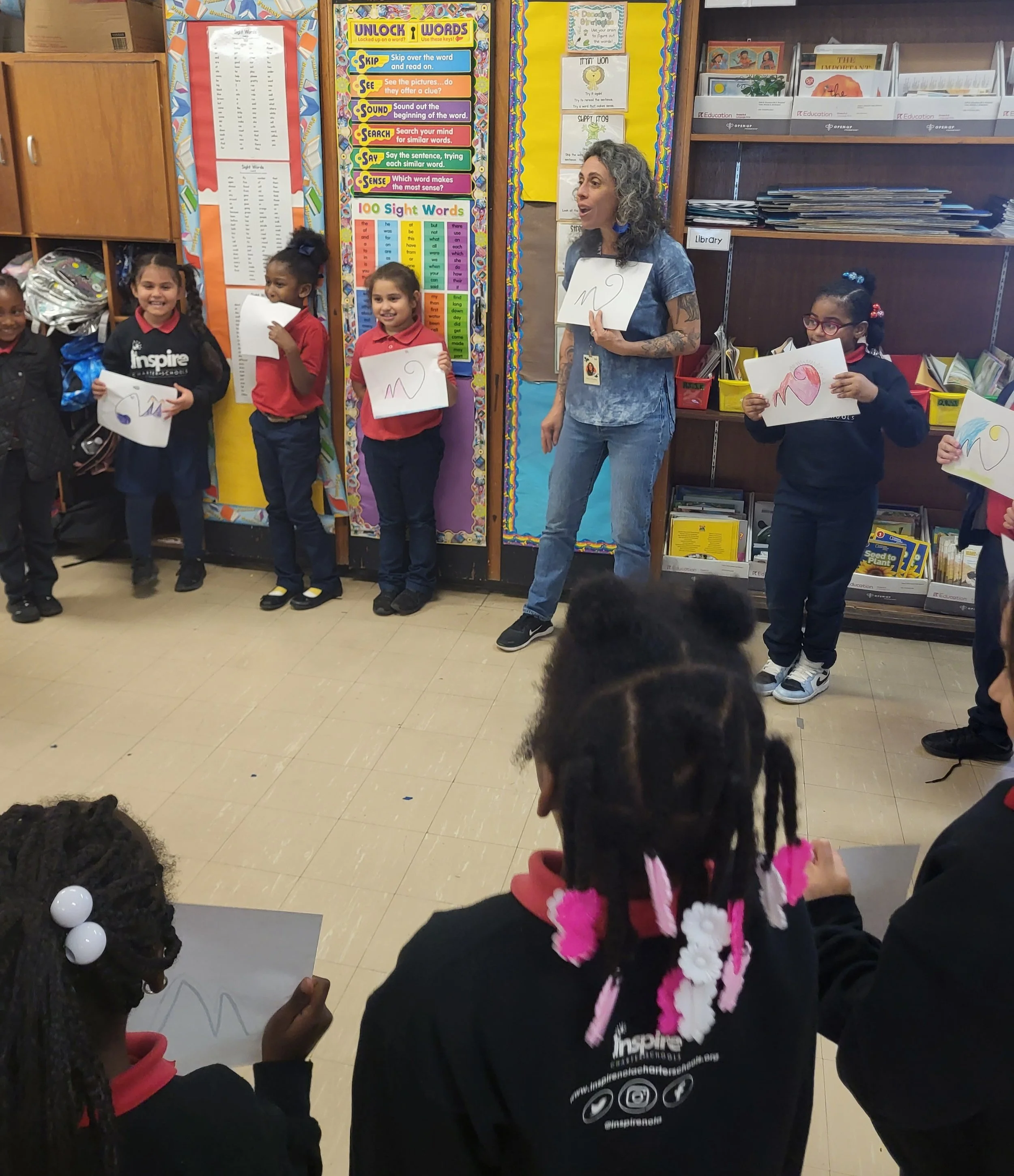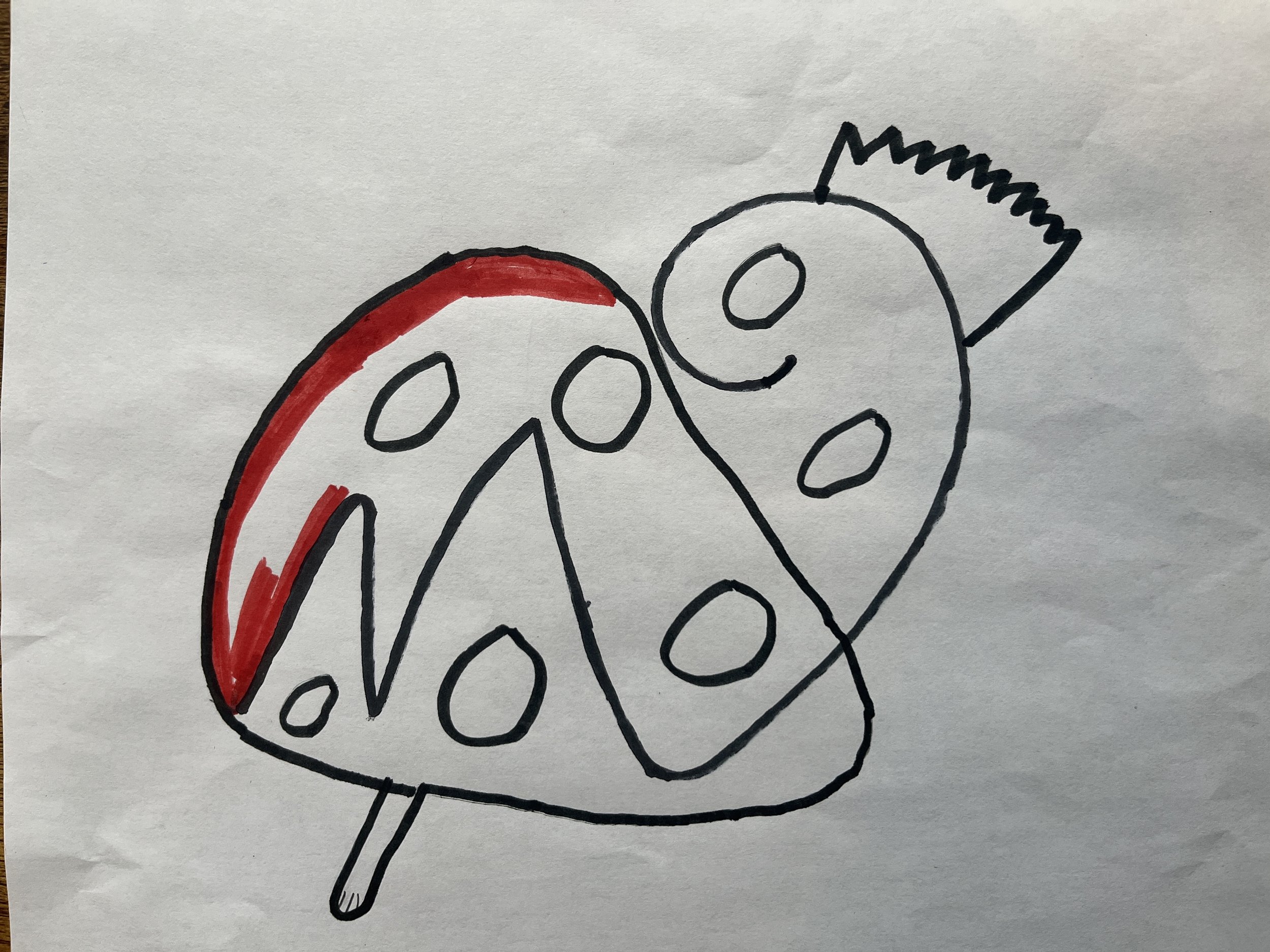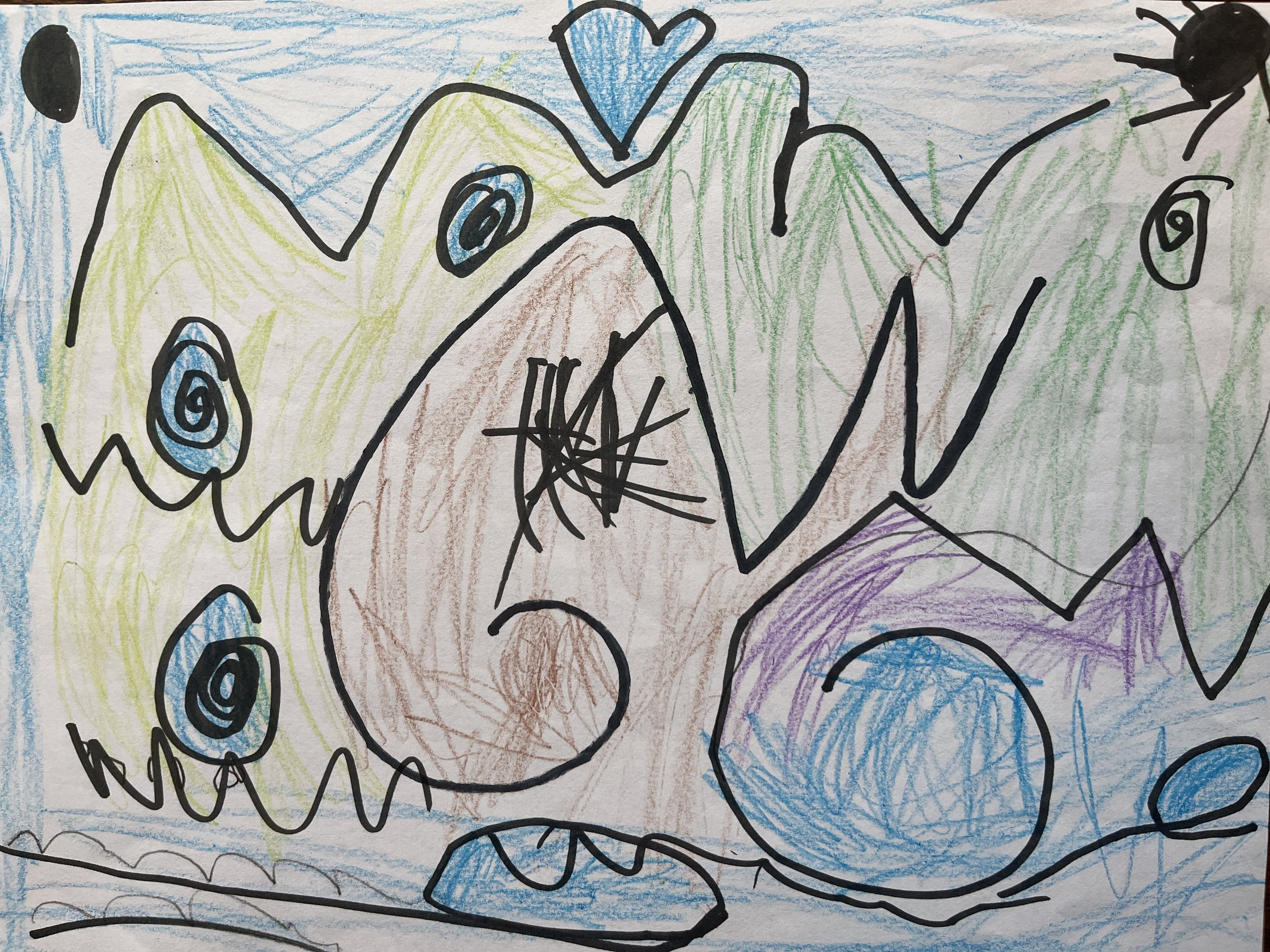The Art of Asking Liberating Questions
Dwight D. Eisenhower Elementary inspireNOLA, K-4th Grade | ELA & Visual Art
Kitty O’Connor
During my very first lesson with elementary students at Eisenhower, we began with an activity called, “Mirror, Mirror.” Students faced each other and took turns mirroring each other’s actions. This provided not only an opportunity to be silly, but also to connect and discuss the roles and responsibilities of “leader” and “follower.” Most students loved being in control of making their partner do funny things, but we also noted the care you have to take when you are in a position of control (moving slowly and not creating challenges that prove to be impossible for your partner). Students also reflected on the level of focus required to be “the follower” (paying close attention to details, and connecting with your partner).
After an opening movement activity that made us all feel a little more comfortable in our own creativity, students were given the project of “finishing the squiggle”. Each student was given a piece of paper with the exact same squiggle on it, and 5 minutes to turn their squiggle into whatever they wanted. The squiggle quickly turned into a dino-car, a robin laying an egg in a nest, two girls at the ocean, a scorpion, a bunny rabbit, a tsunami, a hamster, a snail…watch the video below to witness some of the squiggle transformations from kindergarten, 1st grade, 2nd grade, and 4th grade classes. At the end of each class we stood in a big circle so we could all see & celebrate each other's squiggles. We recognized that even though they all started off exactly the same, they each became a unique expression of each person.
I left each classroom reflecting on the impact of creating assignments that truly do not have a “right” answer. The creative freedom of “finish the squiggle” was pretty unintentional, but a priority I will keep for future lessons. Students are so proud of their creations. I also learned it is a crucial part of lesson planning to equate enough time for all students to be able to share their work if they want to; it can be very crushing to have a thought or a piece of art you want to share with your whole class, and there isn’t enough time for you to be called on. One of the best parts of playing a role in youth creativity is getting to hear them share and explain their work!



